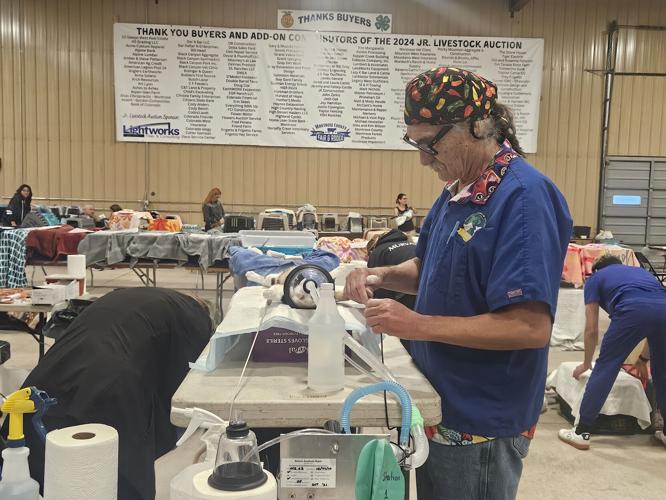More Than 200 Cats Sterilized at Massive Clinic Led by ‘Rocky Mountain Vet’ and Coalition, Marking a Major Step in Animal Welfare…
In a remarkable display of collaboration and compassion, more than 200 cats were sterilized at a large-scale veterinary clinic this past weekend, an event spearheaded by the renowned “Rocky Mountain Vet” and supported by a coalition of local animal welfare organizations. The initiative, hosted at a temporary clinic space set up in a converted community center, was designed to tackle the region’s growing feral and stray cat population.
The event drew both volunteers and professionals from across the state, combining the expertise of licensed veterinarians, veterinary students, and animal advocates who share a common goal: reducing overpopulation and improving the health and safety of community cats.
A Community-Powered Mission
The massive sterilization clinic, which ran over the course of two days, was described by organizers as a “logistical marathon.” Cats were brought in from shelters, rescue groups, and even directly from neighborhoods where colonies have become increasingly unmanageable.
Dr. Jeff Young, famously known as the “Rocky Mountain Vet” from television, led the medical team. He emphasized the importance of sterilization as both a humane and effective solution:
“Every cat we sterilize today represents countless unwanted litters prevented tomorrow. This isn’t just about numbers; it’s about quality of life for animals and communities,” Dr. Young said.
Working alongside him were over 50 volunteers, including vet techs, local college students studying animal science, and community members who transported cats, managed intake, and provided post-surgery care.
Tackling Overpopulation at Its Root
The problem of stray and feral cats has long been a challenge in both rural and urban areas. With one unspayed female cat capable of producing multiple litters per year, colonies can multiply at alarming rates. Unchecked populations not only face hunger, disease, and injury but also strain shelters already at capacity.
By sterilizing more than 200 cats in one concentrated effort, the coalition made a measurable impact on reducing future growth of these colonies. Organizers estimate that this single clinic could prevent thousands of births over the next several years.
“Trap-Neuter-Return (TNR) programs are the most sustainable way to manage feral cats,” explained Sarah Mitchell, director of a local animal rescue that participated. “Rather than euthanizing or ignoring the problem, we’re creating long-term solutions that protect both the animals and the environment.”
A Balancing Act of Care and Speed
The event was meticulously planned to balance high-volume efficiency with animal welfare. Each cat underwent a careful intake process, received vaccinations against rabies and other common feline illnesses, and was ear-tipped—a small notch in the ear that signals a cat has been sterilized.
Recovery areas were set up with soft bedding and heat lamps, ensuring the cats were comfortable as they came out of anesthesia. Volunteers stayed on shift around the clock to monitor their progress. By the end of the clinic, every cat had safely recovered and was ready to return to its original territory or, in some cases, to be adopted.
Community Response and Future Plans
The clinic drew widespread praise from local residents, many of whom had seen firsthand the challenges of stray cats in their neighborhoods. For some, it was an opportunity to engage in animal welfare for the first time.
“This was eye-opening,” said David Torres, a college student who volunteered at the clinic. “I didn’t realize how big the issue was until I helped intake 30 cats from just one neighborhood. It makes me proud to know I played a small part in making things better.”
The coalition behind the event has already announced plans to hold similar clinics in the future, with the next one tentatively scheduled for spring. Funding remains the biggest challenge, as large-scale sterilization requires significant resources for medical supplies, equipment, and transportation.
Still, with support from donors and partnerships with veterinary professionals like Dr. Young, organizers remain optimistic.
A Step Toward a Healthier Future
At its heart, the massive sterilization clinic represented a community coming together for a common cause. It demonstrated how coordinated, compassionate action can lead to measurable change—not only reducing overpopulation but also improving the welfare of cats that often live on society’s margins.
“This isn’t the end—it’s just the beginning,” Dr. Young noted as the final cats were released from recovery. “The more we come together as a community, the closer we get to ensuring every animal has a fair chance at a healthier, safer life.”
For the cats sterilized this weekend, that healthier future has already begun.
Would you like me to also craft a 50-word headline for this news piece, similar to the style you requested in your other stories?
